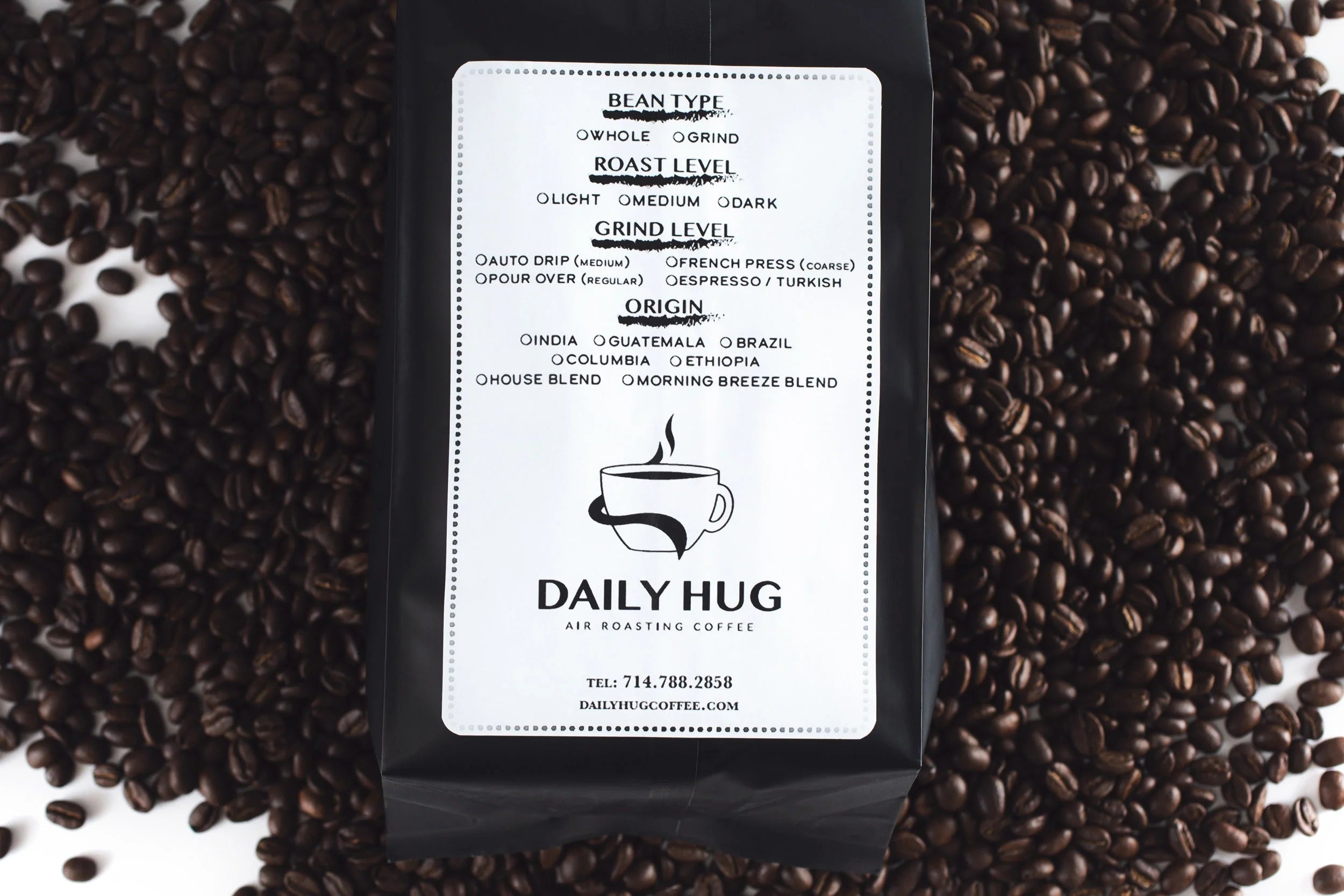Navigating coffee flavor profile descriptions can feel like learning a new language, but understanding these tasting notes is key to finding coffees you’ll love and avoiding those that don’t match your preferences.
At Daily Hug Coffee, we craft detailed flavor profiles for each of our offerings because we believe informed customers make better choices and enjoy their coffee more. Learning to decode coffee flavor profile language transforms coffee shopping from guesswork into confident selection.
Understanding Coffee Flavor Profiles
Coffee flavor profile descriptions draw from an established sensory vocabulary used by professional cuppers. These aren’t marketing terms – their efforts to describe the genuine sensory experience of tasting coffee.
When you see terms like “chocolate undertones” or “bright acidity,” they refer to specific flavor compounds that trained palates can consistently identify.
Acidity in Coffee Descriptions
Acidity in coffee doesn’t mean sourness or sharpness. It refers to lively notes that give coffee brightness and complexity.
Common acidity descriptions include:
-
Wine-like acidity
-
Citrus brightness
-
Malic acidit
Our Colombian beans feature a bright acidity that adds vibrancy without overwhelming the cup.
Understanding Coffee Body
Body refers to the texture or weight of coffee in your mouth. It’s one of the most noticeable aspects of a coffee’s flavor profile.
-
Light body: Thin and delicate.
-
Medium body: Balanced and pleasant.
-
Full body: Rich, heavy, and satisfying.
Our Brazilian beans exemplify full body characteristics, offering a substantial mouthfeel loved by many coffee drinkers.
Sweetness Indicators
Sweetness terms help predict how balanced and pleasant a coffee will taste. Look for descriptors like:
-
Caramel sweetness
-
Honey notes
-
Natural sweetness
Our air roasting process enhances natural sweetness by avoiding bitter compounds that develop in darker, traditional roasting.
Flavor Notes Explained
Flavor notes describe natural characteristics that develop through growing, processing, and roasting – not added flavors.
Common examples include:
-
Dark chocolate
-
Toasted nuts
-
Berry notes
These notes help you relate to familiar tastes while understanding coffee’s complexity.
Processing Methods and Their Influence
The processing method strongly influences flavor.
-
Washed coffee: Clean and bright, highlighting origin qualities.
-
Natural processed coffee: Fruit-forward with wine-like depth.
Understanding these differences helps you choose coffees aligned with your flavor preferences.
The Role of Roast Level
Roast levels help predict intensity and flavor character.
-
Light roast: Preserves origin flavor and higher acidity.
-
Medium roast: Balances origin and roast characteristics.
-
Dark roast: Emphasizes rich, roasted notes.
Our House Blend demonstrates balanced medium roasting for broad appeal.
Temperature Evolution in Flavor
Coffee flavors evolve as they cool. Some reveal new sweetness or complexity at different temperatures.
Descriptions such as “evolving sweetness” or “complex cooling” suggest coffees that reward patient tasting and layered exploration.
Brewing Method Compatibility
Different coffees perform better with specific brewing methods.
-
Espresso: Highlights body and intensity.
-
Pour Over: Emphasizes clarity and complexity.
-
French Press: Enhances mouthfeel and depth.
Knowing brewing recommendations helps you get the best results with your equipment.
Regional Flavor Characteristics
Regional differences shape every coffee’s flavor identity.
-
Ethiopian coffees: Floral and tea-like.
-
Central American coffees: Chocolate and nut notes.
-
South American coffees: Balanced, smooth, with regional nuances.
Our Colombian and Brazilian coffees each express unique personalities influenced by soil, climate, and local traditions.
Developing Your Personal Palate
Your experience level influences how you perceive flavor. Beginners may focus on basic elements like body or acidity before identifying subtler notes.
Be patient – with time and comparison, your palate will refine naturally.
Comparative Tasting for Better Understanding
Comparing coffees side by side accelerates your learning. Our Trio Tasting Pack provides three distinct profiles to help you recognize and articulate different characteristics through direct experience.
Frequently Asked Questions
Why don’t I taste the flavors mentioned in coffee descriptions?
Palate development takes time. Focus first on body and acidity. Brewing methods and water quality also influence perception.
Are coffee flavor notes added artificially?
No, they describe natural compounds formed through growing, processing, and roasting – not added flavoring.
How do I know if a coffee will match my preferences?
Start with body and acidity. Then consider flavor families such as fruity, nutty, or chocolatey based on your taste preferences.
Should I trust tasting notes from different roasters?
Reputable roasters use standard vocabulary, though interpretation may vary. Stick with roasters whose descriptions have matched your taste before.
Discover Your Perfect Cup
Explore our detailed flavor profiles at dailyhugcoffee.com and find your perfect coffee match today!

0 comments